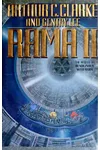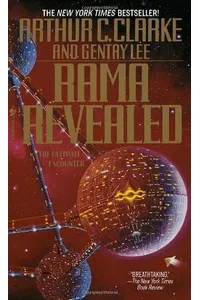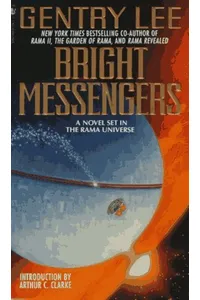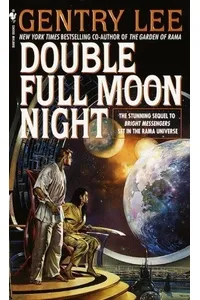Step into the cosmic wonder of the Rama series, where humanity’s curiosity collides with the mysteries of an alien megastructure! Penned by science fiction titan Arthur C. Clarke, this saga begins with a colossal cylindrical spacecraft—Rama—entering our solar system, sparking awe and existential questions. Blending hard science with philosophical depth, the series invites readers to ponder our place in an infinite universe.
With its gripping narrative and visionary scope, Rama isn’t just a story—it’s a journey into the unknown, perfect for fans of cerebral sci-fi. Let’s explore how this iconic series came to be, its core books, and why it still captivates readers today.
How Rama Began
In the early 1970s, Arthur C. Clarke, already a sci-fi legend thanks to 2001: A Space Odyssey, envisioned a new tale of first contact. Inspired by the idea of an enigmatic alien artifact, he crafted Rendezvous with Rama (1973), a standalone novel that won both the Hugo and Nebula Awards. Its success sparked demand for more, leading Clarke to collaborate with Gentry Lee for three sequels, expanding the universe and its mysteries.
Clarke’s fascination with space exploration and humanity’s potential drove the series. He drew on real scientific principles, like orbital mechanics, to ground the fantastical, making Rama a beacon for readers craving plausible yet mind-bending sci-fi.
The Heart of Rama
The series spans four novels, each building on the enigma of Rama, a 50-kilometer-long alien craft filled with strange landscapes and secrets. Rendezvous with Rama follows a team of astronauts exploring the silent, seemingly abandoned vessel, marveling at its alien engineering. Its sequels—Rama II (1989), The Garden of Rama (1991), and Rama Revealed (1993)—shift focus to human colonists interacting with Rama’s creators and other species, weaving a tapestry of interstellar drama.
Themes of discovery, survival, and the unknown permeate the series. Clarke’s meticulous attention to scientific detail, paired with philosophical musings on humanity’s insignificance, creates a unique tone—both awe-inspiring and humbling. Set in the 22nd century, the Rama universe feels vast yet accessible, with humanity on the cusp of cosmic revelation.
While the first book is a lean, introspective masterpiece, the sequels, co-authored with Lee, lean into character-driven narratives and broader world-building. Some fans adore the expanded scope; others cherish the original’s minimalist mystery. Either way, Rama’s blend of hard sci-fi and existential wonder sets it apart.
Why Rama Resonates
The Rama series left an indelible mark on science fiction, inspiring countless works about alien megastructures, from TV’s The Expanse to video games like Dead Space. Its focus on scientific plausibility and philosophical depth appeals to readers who crave intellectual stimulation alongside adventure. Even decades later, the series’ questions about humanity’s role in the cosmos remain relevant, fueling discussions among sci-fi enthusiasts.
For fans, Rama’s allure lies in its balance of mystery and realism. Clarke’s ability to make the unimaginable feel tangible keeps readers returning, while the series’ open-ended questions spark endless speculation. It’s a testament to Clarke’s genius that Rama still feels timeless, inviting new generations to explore its depths.
- About Rama
- First published: 1973 (Rendezvous with Rama)
- Total books: 4
- Awards: Hugo and Nebula for Rendezvous with Rama
- Authors: Arthur C. Clarke, with Gentry Lee (sequels)
Ready to explore the unknown? Grab Rendezvous with Rama and dive into a sci-fi odyssey that’s as thought-provoking as it is thrilling!






